- Nancy Ruzycki
- http://EQuIPD.mse.ufl.edu
- Senior Lecturer
- Engaging Quality Instruction through Professional Development
- http://equipd.mse.ufl.edu/
- University of Florida
- Leigh Arnold
- EQuIPD Grant Instructional Specialist
- Engaging Quality Instruction through Professional Development
- http://equipd.mse.ufl.edu/
- University of Florida
- Jared Carter
- EQuIPD Grant Instructional Specialist
- Engaging Quality Instruction through Professional Development
- http://equipd.mse.ufl.edu/
- University of Florida
- Christine Danger
- Engaging Quality Instruction through Professional Development
- http://equipd.mse.ufl.edu/
- Krista Dulany
- EQuIPD Grant Instructional Specialist
- Engaging Quality Instruction through Professional Development
- http://equipd.mse.ufl.edu/
- University of Florida
- Maria Hersey
- https://www.linkedin.com/in/drmariahersey/
- University of Florida EQuIPD Grant Instructional Specialist
- Engaging Quality Instruction through Professional Development
- http://equipd.mse.ufl.edu/
- Seleka Kerr
- EQuIPD Grant Instructional Specialist
- Engaging Quality Instruction through Professional Development
- http://equipd.mse.ufl.edu/
- University of Florida
- Xavier Rozas
- Engaging Quality Instruction through Professional Development
- http://equipd.mse.ufl.edu/
- EQuIPD, University of Florida
Public Discussion
Continue the discussion of this presentation on the Multiplex. Go to Multiplex








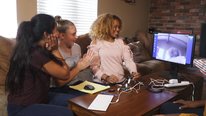
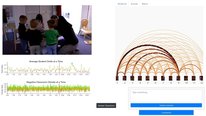
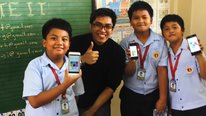
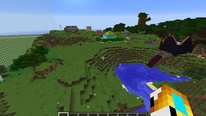
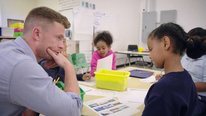
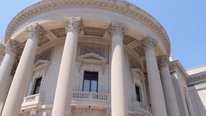
Nancy Ruzycki
Senior Lecturer
Hi Everyone, we appreciate your viewing our video. We are seeking to find others using a modeling or system thinking approach to providing PD for teachers.
Specific questions we would ask of our visitors are:
Thanks for viewing this video and sharing with us!
Jane Jackson
Elizabeth Day
Shandy Hauk
Thanks for the introduction to the work. Is there a project publication available that gives a bit more detail about what, for your project, constitutes "a core concept" and what evidence would persuade a teacher that a "model" of that core concept existed/had been developed (either by the teacher or by students)?
Nancy Ruzycki
Senior Lecturer
Hi Shandy - Thanks for your great question, see the thread below
Nancy Ruzycki
Senior Lecturer
Hi Shandy, thanks for your great feedback We are working on papers now for submission this summer. Part of the teacher development in the grant is to "define" what the core concepts are in their discipline and how those core concepts point to the standards they are asked to teach. We tell teachers standards are not core concepts, but come from, and point to core concepts in your discipline. In history the core concept may be conflict or democracy. In ELA it could be sentences, paragraphs, character identity.... In science it could be 1D motion. We work with teachers to get them to "define" their big ideas using models and to structure lessons around these models using a system thinking approach (discrimination, perspective, relationships, parts/wholes), and then to teach the lesson using a modeling instructional frame (elicit, develop, deploy, refine) for the concept model in a collaborative inquiry based classroom. In Year two we work with teachers to use video analysis to analyze the effectiveness of their lessons. Technology in the grant is used as a tool to help students and teachers build, test and communicate models. Teachers use formative and summative assessments created by their districts to measure the change in student performance based on their model development. For example, when an elementary teacher in the grant developed a model based lesson for borrowing, her students worked to develop their own process map and model and when tested using iREADY scored 100% on the assessment, which had never happened in this teacher's classroom before.
Jane Jackson
Lynda McGilvary
Communications Director
This looks like a great project. Is it closed to teacher enrollment, or is it continuing forward and if so, for how long? How would an interested teacher join the program?
Nancy Ruzycki
Senior Lecturer
Thanks for your question.
Nancy Ruzycki
Senior Lecturer
Hi Lynda - Thanks for your interest in our Grant Program. Right now we are a WWC level study, so we are closed to new teachers until the grant study wraps up. After that we invite teachers to join. This summer I will be using TEAMS to create some badges and micro-credentials for System Thinking, STEM practices cross curriculum (Inquiry based), Technology and Data collection and Analysis, and Workforce practices. If teachers are interested, these micro-credentials and materials will be available to all teachers. Interested teachers can email me at EQuIPD.Grant.UF@gmail.com.
Jane Jackson
Laurie Hamill
Love the Video! You describe the Grant and how it benefits teachers and ultimately our students and leaders in the future.
Nancy Ruzycki
Senior Lecturer
Thanks Laurie for your feedback on the video! We love our Teachers in the grant.
Jared Carter
EQuIPD Grant Instructional Specialist
Hello all,
Thank you for taking the time to watch and/or comment on our video. I am one of the coaches on this project and wanted to share an experience I had with an elementary STEM teacher. Her lesson was focused on thermal insulation. She was able to use digital thermometers to plot the temperature vs. time of chilled water in insulated and uninsulated containers in real time. This enabled her students to spend class time drawing conclusions and having conversations instead of plotting data. The next time the class met, the students were able to iterate on their own insulator designs by using the digital thermometer to probe their design.
Jane Jackson
K. Renae Pullen
Jane Jackson
How did students draw conclusions? In small groups? or in a whole-class discussion? Did they use small whiteboards as tools to build their model using words, pictures, and sketches (graphs) showing relationships between variables?
Nancy Ruzycki
Senior Lecturer
Jane - Students draw conclusions in small groups, and through whole class discussions, we use whiteboarding and sketches and graphs to defend, discuss and refine models. We use the phenomena -graphical - symbolic/mathematical relationships like ASU modeling. We modify it for courses where there is no explicit pathway. For example how do students build a model of democracy? how do we use the modeling instructional frame to support this?
Margo Murphy
Science Instructor
Nice work! I would love to see some examples of teachers learning/grappling with using this framework along with their planning and teaching. Thinking of that could you discuss the kind of support you have for teachers as they are learning and implementing. Also what are your measure of effectiveness both for teaching and learning.
Nancy Ruzycki
Senior Lecturer
Hi Mary, I have to say "grappling" is the right word for what dissonance the teachers experience as part of the professional development. We have several measures of effectiveness related to the WWC study. We are using a modified observation tool called from Clemson (Jeff Marshall) called EQUIP for measurement of change to teaching practices. We also have student level data for state assessments. We are collecting longitudinal artifacts from teachers over time showing changes to planning and lesson structures.
Margo Murphy
Nancy Ruzycki
Senior Lecturer
We also have the grant coaches working with teachers one on one at least twice a month to help implement grant goals. We have additional Saturday trainings 2 x a semester to deepen understanding of grant pedagogy.
Xavier Rozas
As a former high school administrator and CTE Director I have worked with a wide variety of teachers at different stages in their careers and with differing perspectives on effective teaching and learning. Just when I started to feel that I had it figured out I was recruited by Dr. Ruzycki and joined the EQuIPD Coaching Team in a rigorous training regiment that has caused me to rethink how I support teachers and instructional leaders. Systems thinking and model development to support authentic inquiry and core concept development are game changers! Not the next 'new thing' or add-on that educators need to 'fit in' somewhere, instead we are meeting teachers where they are and helping them to think about the process of teaching and learning as a scalable system of parts and wholes linked to a larger network of STEM disciplines. This is not your grandmother's PD, but it should be. Thanks for shout outs, everyone!
Betsy Stefany
This a great approach to a solid gap in leading into STEM. Great too that you "meet teachers where they are"...and build along with CTE in mind!. The concrete start to STEM is a struggle for many as the public views the far off career and tends to skip over the foundation after the “experience”, offering instead the “carrot” instead of actually focusing on what students need at the base.
New steps into modeling are building around the maker directions but your title seemed to lean into the narrative direction I watched to see more of the sensor integration and involvement with student narrative. I returned also to think more about your question on modeling “development in students to lead to improvement in learning outcomes?” Pressing forward with the new bluetooth type sensors would help. The opportunity to build into a portfolio is easier when transitioned to digital forms.
Our project builds from the middle school level building various levels of digital tools into align with senses …and interests. Every year we compare with Key West, FL over the spring equinox as that’s the Southernmost point and a great contrast to New Hampshire.
Even during this shutdown, the diver who carries a light/temp logger is instead riding his bike with a logger left at home and one attached to his bike. He builds in a mapping software telling him how many calories he’s used and his progress on his goals. He’s shown at the end of the video before we knew he’d be off on that venture! He includes his sensor info on a monthly basis and pictures of sunsets and/or additional single observations.
Thanks for the great chance to think through the week by keeping up with your discussions!
Nancy Ruzycki
Nancy Ruzycki
Senior Lecturer
Betsy- Thanks so much for your post. We are actually sensor "agnostic" and let teachers pick from a variety of sensors and probes based on their comfort level. In the summer we have a week long bootcamp for teachers where we have a "Sandbox" for sensors and probes. Some teachers like the microbits, and some like the plug and play or bluetooth options. We support any probes/sensors that allow for datalogging. We are both maker and narrative, but outside the STEM teachers we mainly see the narrative version. I watched your video and your work is well aligned with ours. We are really trying to build the foundation for work like yours. Within the early grades we need to build coherent and threaded models for students so that when they move up to upper level work, they understand the models well enough to build systems models which support the advanced work you are doing. We believe that models and systems are at the heart of learning and knowledge acquisition. Thanks for sharing about your work.
Betsy Stefany
We too are not focused on the sensors or data as stand alone achievements but continuing elements of projects to be united with reports. From the beginning of integrating technology in STEM the extension of discussions with varied “languages” of text, visual..and data were to improve science observation communications into STEM. Along with the digital tools came reading materials, adding fiction to engage “reading circles” selecting “STEM fiction” that could be discussed at grade levels in a broader and more fun way than as lists of loosely related vocabulary terms. We continue to expand the potential of this approach with varied media to reach individual interest and field projects.
Nancy Ruzycki
Senior Lecturer
Betsy- I agree with your approach to bring in the writing and disciplinary literacy practices to students. I like that you paired with fiction. When this is over, we should talk more about our projects!
Christine Danger
I use a constructivist framework for modeling instruction to support teachers in instructional practices for improved student learning outcomes for core content areas. Several teachers have become excited when they figured out that they were having students do too many activities that were not contributing to the building of understanding of the concept model. When they began doing fewer activities, but choosing the ones they did to provide what students needed to develop understanding their outcomes improved and teachers felt less rushed.
Nancy Ruzycki
Senior Lecturer
Thanks Xavier and Christine!
If you have questions about the grant and teachers, our coaches are a great resource for you. Please feel free to ask us questions!
Jane Jackson
Nancy: I know that you took physics Modeling Workshops. Modeling Instruction began at Arizona State University in the 1980s, in a partnership by ASU physics professor David Hestenes and Tempe high school physics teacher Malcolm Wells. In what ways is your grant work influenced by ASU Modeling Instruction?
Nancy Ruzycki
Senior Lecturer
Jane - see my thread below. The ASU workshops helped me see the power of models, and using it with my students helped me understand key refinements which would strengthen the model building in my students.
K. Renae Pullen
Specialist
I love modeling with students. What are your approaches to having students refine and/or explain their models?
Thanks for exploring this disciplinary practice with younger students. They are certainly capable for this sophisticated thinking. Exciting project indeed!
Nancy Ruzycki
Senior Lecturer
K. Renae- We could not agree with you more about young students. We have been working with K students who show incredible nuances in understanding of night and day. K students have been working with Scratch Jr to tell stories about "hot" and "cold" and how temperatures change during the day. We love seeing the way students build and apply concept models. Students refine and explain models in two ways. Depending on the content - we have teachers ask students to develop a model for a phenomena or concept before they start the model building activities (usually in the elicit stage). Then as students work through activities they revisit the model based on new knowledge acquisition. These activities occur in collaborative groups so students can share and explain/defend their models within the activity (generally inquiry). The model helps provide the frame for what knowledge is "important" in the activity and is the reference for the system thinking practices (discrimination, relationships, parts/wholes, perspectives). Once the model is developed, it is deployed in some real world application, and if needed, it is then refined based on constraints encountered in the real world. Thanks for watching our video!
K. Renae Pullen
Jane Jackson
If students 'develop a model ... BEFORE they start the model building activities', isn't that just a GUESS? In ASU Modeling Instruction, students OBSERVE a physical phenomenon first; they brainstorm as a class the variables and relationships that could be important, then they work in teams of 3 or 4 to devise an experiment to reveal and measure relationships, hence building a scientific model. They represent their model on small whiteboards (2' x 2.5') using words, pictures, graphs, and (from the technology-generated graph) mathematical equations. Then each group shares their model in a whole-group "board meeting". The teacher ties it all together and introduces scientific language. Then students deploy the model in real-life situations, and refine it when needed. The entire process takes 2 or 3 weeks (in high school physics: see http://modeling.asu.edu). In what ways is your process similar to and different from Modeling Instruction?
Nancy Ruzycki
Senior Lecturer
Jane- yes, it is not so much a "guess" as eliciting what model conceptions they have before they go through the experiences with the phenomena. This pre-model building only works if students have some prior experience with the concept. For example I could ask you "How do I know when words put together make a sentence?" this asks the students, what model they have going into the activity. In physical systems we could ask "Why does the ball stay in my hand. What would the ball do if my hand were no longer there?". There is a place for the pre-model building and it can be through discussion, whiteboarding or some other eliciting move. The idea is to activate what model has been built in that student and the student can acknowledge the model. Then through the activities and system thinking practices (discrimination, parts/wholes, relationships, perspectives) the student builds a more complete model. It is important to have a "frame" for students to hang knowledge in order for "sense making".
Then we would go into the more traditional modeling instruction platform like the ASU modeling program. We use the modeling instruction model, we just add some additional explicit scaffolds or frames for students, and we apply it broadly across curriculum. We also build in more design and use of technology to help students develop a clear representational model. We also have inquiry and activities conducted through collaborative groupings with student voice.
In our grant, we recognize that many teachers do not have voice or choice in the curriculum they teach, and some districts mandate teaching scripts for teachers. This grant seeks to meet teachers where they are, by reorganizing, supplementing, and staging curriculum to better meet student needs. We look at the pedagogy behind modeling and apply these methods to any curriculum.
We encourage all teachers to sign up to take your modeling instructional program. This pedagogical approach is very strong and it informs much of our work with students and teachers in this grant. We heart emoji ASU Modeling Instructional programs.
Edward Williams
I love the use of models!
Nancy Ruzycki
Senior Lecturer
Thanks Edward for your post!